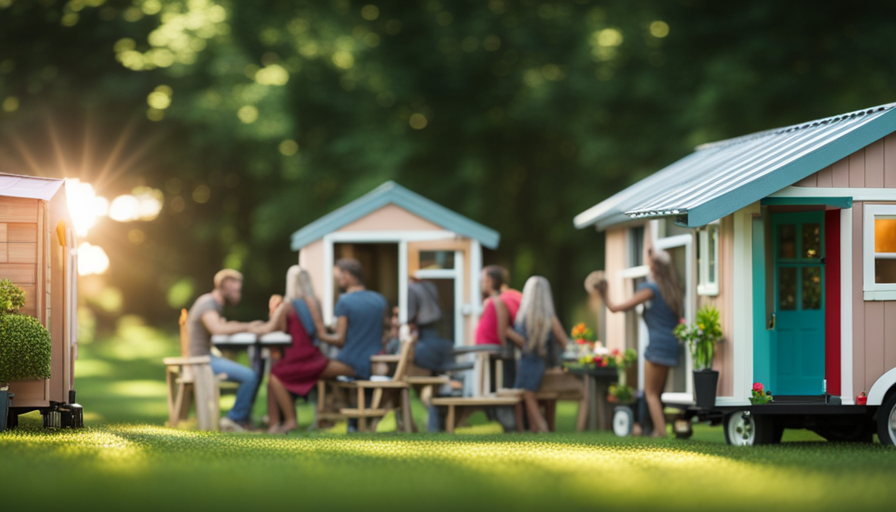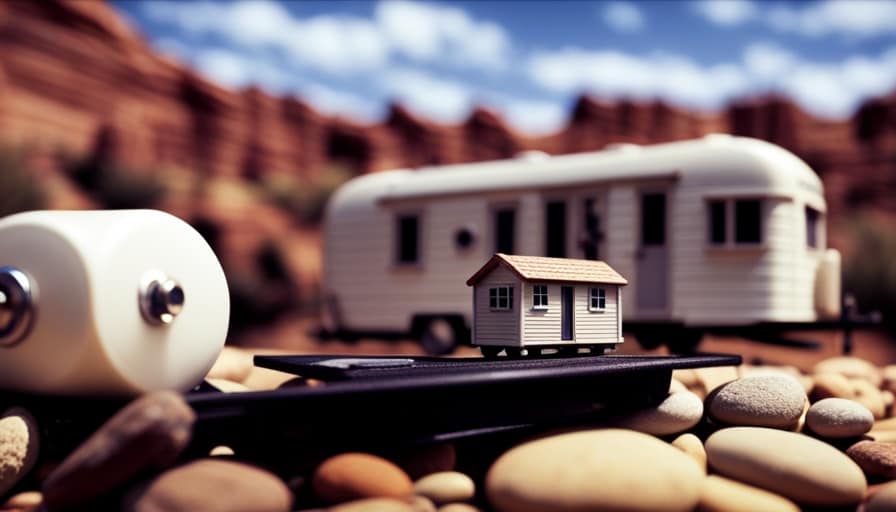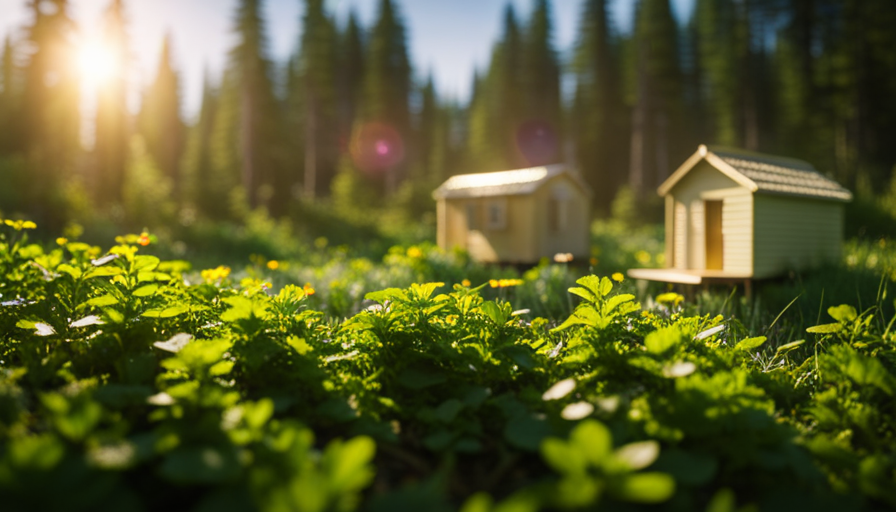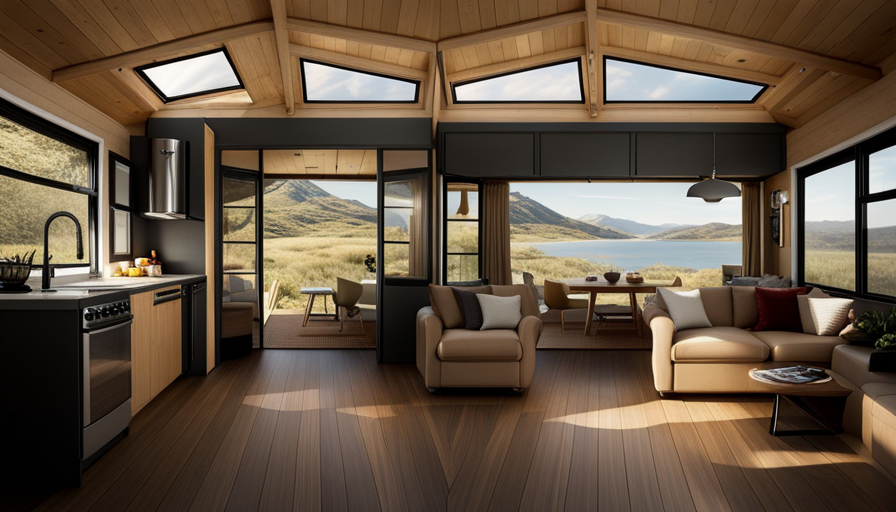Did you know that in the last fifty years, the average size of a newly built single-family home in the United States has grown by over 1,000 square feet? Many people believe that bigger is always better. However, there is a new trend challenging this notion – the tiny house movement. In this article, we will explore the concept of a tiny house community and the motivations behind people choosing to live in these smaller spaces.
Tiny house living is not just about downsizing; it is a lifestyle that promotes simplicity, sustainability, and community. In a tiny house community, individuals or families live in small, self-contained homes ranging from 100 to 400 square feet. These communities typically have shared resources such as communal gardens, laundry facilities, and gathering spaces, fostering a sense of connection and cooperation among neighbors.
Living in a tiny house community requires careful space management and organization. Each square inch must be utilized efficiently, leading to creative storage solutions and minimalist lifestyles. Challenges such as zoning regulations and limited space can arise, but by working together, residents find innovative solutions and create a sense of belonging and support within the community.
If you are considering joining a tiny house community, this article will provide tips and insights to help you navigate this unique way of living. So, whether you are intrigued by the idea of simplifying your life or are just curious about this growing trend, keep reading to discover how a tiny house community works.
Key Takeaways
- Tiny house communities promote simplicity, sustainability, and community by providing small, self-contained homes and shared resources.
- Downsizing in a tiny house community reduces carbon footprint and promotes sustainability by optimizing space and minimizing waste.
- Building strong relationships with neighbors is essential in a tiny house community, and engaging in community activities fosters camaraderie and support.
- Creative storage solutions and maximizing outdoor living spaces are important for a balanced lifestyle in a tiny house community, fostering sustainable living practices and connection with nature.
Understanding the Concept of Tiny House Living
Imagine living in a tiny house community where you can experience the true essence of minimalistic living and create meaningful connections with like-minded individuals.
The benefits of downsizing in a tiny house community are numerous. By living in a smaller space, you can reduce your carbon footprint and live a more sustainable lifestyle. Tiny houses are designed to optimize space and minimize waste, making them an environmentally friendly choice.
Additionally, downsizing allows you to focus on what truly matters, as you’re forced to declutter and prioritize your belongings.
Living in a tiny house community also provides you with a sense of camaraderie and support. You can share resources and ideas with your neighbors, creating a strong community bond.
Exploring the shared resources in a tiny house community allows you to fully embrace the benefits of this unique living arrangement.
Exploring the Shared Resources in a Tiny House Community
Contrary to popular belief, living in a small space does not mean sacrificing comfort; in fact, the shared resources in a tiny house community are akin to a bustling marketplace, where neighbors freely exchange tools, skills, and stories, creating a vibrant tapestry of camaraderie. In a tiny house community, residents enjoy a wide array of shared amenities that enhance their quality of life. From communal gardens where fresh produce is grown collectively, to shared laundry facilities that save space and resources, these amenities foster a sense of togetherness and convenience. Additionally, community events such as potluck dinners, movie nights, and skill-sharing workshops further strengthen the bonds among neighbors. By participating in these activities, residents not only build strong relationships with their neighbors, but also gain a support system that enriches their daily lives.
Building Strong Relationships with Your Neighbors
Living in close proximity to others can lead to the development of strong and meaningful relationships with your neighbors. Building a community and fostering connections in a tiny house community is essential for creating a supportive and harmonious living environment.
Here are four ways to build strong relationships with your neighbors:
-
Engage in community activities: Participate in communal events and gatherings to get to know your neighbors better and build a sense of camaraderie.
-
Communicate openly: Establish open lines of communication with your neighbors, expressing any concerns or issues that may arise and working together to find solutions.
-
Show respect and consideration: Be mindful of your neighbors’ boundaries, noise levels, and shared spaces, practicing good etiquette to maintain a peaceful atmosphere.
-
Offer support and assistance: Extend a helping hand to your neighbors when needed, whether it’s lending a tool or offering a helping hand with a project.
By building strong relationships with your neighbors, you can create a tight-knit community where everyone feels connected and supported. This sense of community is crucial for managing space and organization in a tiny house community.
Managing Space and Organization in a Tiny House Community
When living in a tiny house community, managing space and organization becomes crucial.
One key point to consider is creative storage solutions, which can help maximize the limited space available.
Additionally, it’s important to focus on maximizing outdoor living spaces, as this can provide additional areas for relaxation and socialization.
Creative Storage Solutions
To maximize your space in a tiny house community, think outside the box and get creative with storage solutions. Here are some ways you can make the most of your limited space:
-
Hidden Storage: Look for furniture with built-in storage compartments, such as ottomans with hidden space inside or beds with drawers underneath. Utilize vertical storage by installing shelves or hooks on the walls to keep items off the floor and out of the way.
-
Multi-functional Furniture: Invest in furniture that serves multiple purposes. For example, a dining table with built-in storage or a sofa bed that can be used for seating during the day and converted into a sleeping area at night.
-
Creative Solutions: Think outside the box and find unconventional ways to store your belongings. Use hanging shoe organizers for small items, install magnetic strips on the inside of cabinet doors to hold knives or metal utensils, or use tension rods to create additional storage space in closets.
By implementing these storage solutions, you can optimize your tiny house living experience and make the most of your limited space.
Transitioning into the next section, let’s explore how to maximize outdoor living spaces.
Maximizing Outdoor Living Spaces
While creative storage solutions are essential in tiny house living, maximizing outdoor living spaces is equally important for a balanced and fulfilling lifestyle. In a tiny house community, the limited indoor space encourages residents to embrace the great outdoors. Outdoor activities become a way of life, with communal gardens, shared green spaces, and outdoor recreational areas fostering a sense of community and connection with nature.
These outdoor spaces provide opportunities for residents to engage in sustainable living practices, such as growing their own food or participating in composting initiatives. Additionally, outdoor living spaces serve as extensions of the tiny homes, creating additional areas for relaxation, entertainment, and socializing. By maximizing these outdoor spaces, tiny house communities create a harmonious blend of nature and sustainable living.
Transitioning into the next section, addressing challenges and finding solutions, requires a thoughtful and proactive approach.
Addressing Challenges and Finding Solutions
In order to successfully address challenges and find solutions in a tiny house community, you must actively collaborate with your neighbors and be open to innovative ideas. Challenges in decision making are inevitable when multiple individuals with different perspectives and priorities come together. However, by fostering a culture of open communication and respectful dialogue, the community can work together to overcome these challenges.
Finding sustainable solutions is also crucial in a tiny house community, where resources are often limited. This may involve implementing renewable energy sources, practicing efficient waste management, and promoting eco-friendly lifestyles. By embracing these challenges and finding sustainable solutions, the tiny house community can thrive and create a more environmentally conscious way of living.
Transitioning into the subsequent section about embracing the sense of belonging, it’s important to recognize that these collaborative efforts also contribute to fostering a strong sense of community and belonging among the residents.
Embracing the Sense of Belonging in a Tiny House Community
In this discussion, we’ll explore the importance of creating a supportive and inclusive environment within a tiny house community. By fostering a sense of belonging and connection, residents can feel supported and encouraged in their journey.
Building lifelong connections is also a key aspect of a thriving tiny house community. It provides opportunities for collaboration, shared experiences, and a sense of community that lasts beyond the physical boundaries of the community itself.
Creating a Supportive and Inclusive Environment
To create a supportive and inclusive environment in a tiny house community, it’s fascinating to note that 90% of residents actively participate in community events and initiatives. This level of engagement is crucial in creating a sustainable lifestyle and fostering community engagement.
Residents take part in various activities such as communal gardening, shared meals, and collaborative projects that benefit the entire community. By actively participating, residents not only contribute to the overall well-being of the community but also build meaningful connections with their neighbors. These connections go beyond simple interactions; they create a sense of belonging and support within the community.
These lifelong connections are essential in building a strong and resilient community where everyone feels valued and included. Transitioning into the subsequent section about ‘building lifelong connections’, it’s important to highlight the impact of these connections on individual well-being and community cohesion.
Building Lifelong Connections
Residents actively participating in community events and initiatives in a tiny house village foster a sense of belonging and support, which in turn contributes to the building of lifelong connections and community cohesion. Building sustainable communities is not just about the physical structures, but also about creating a supportive and inclusive environment where residents can thrive. By organizing regular events such as potlucks, workshops, and communal gardening, residents have the opportunity to come together, share experiences, and develop meaningful relationships. These interactions not only strengthen the social fabric of the community but also provide a platform for residents to support one another in various aspects of their lives. Fostering a sense of community in a tiny house village goes beyond the physical boundaries of the individual homes, creating a network of individuals who genuinely care for each other’s well-being. This strong sense of community is what makes living in a tiny house village a truly unique and fulfilling experience. Transitioning into the subsequent section about ‘tips for joining a tiny house community’, it is important to understand the dynamics of such communities and how to integrate seamlessly into this supportive environment.
Tips for Joining a Tiny House Community
So, if you’re eager to become part of a tight-knit tiny house community, you’re in for a wild ride! The joining process for a tiny house community typically involves a few key steps.
First, you’ll need to research different communities and find one that aligns with your values and lifestyle. Once you’ve found a community you’re interested in, you’ll need to reach out to the community leaders and express your interest in joining. They’ll likely have a set of community guidelines that you’ll need to familiarize yourself with and agree to abide by. These guidelines often include rules about noise levels, shared responsibilities, and shared spaces.
It’s important to respect and follow these guidelines to maintain a harmonious and supportive community environment. Overall, joining a tiny house community requires a willingness to embrace a unique way of life and a commitment to building strong connections with your neighbors.
Frequently Asked Questions
What is the cost of living in a tiny house community compared to traditional housing?
The cost of living in a tiny house community is significantly lower compared to traditional housing. The cost comparison is favorable due to the smaller size of the houses, which translates to reduced expenses for utilities, maintenance, and property taxes.
Additionally, the financial benefits include less debt and mortgage payments, allowing for greater financial freedom. Living in a tiny house community offers a more affordable and sustainable lifestyle option for individuals seeking to minimize their expenses.
Can I have pets in a tiny house community?
Yes, pets are allowed in most tiny house communities, but there may be certain pet restrictions in place. Each community has its own rules regarding pets, such as the number of pets allowed and breed restrictions. Some communities even have pet amenities, like dog parks or walking trails. It’s important to check with the specific community you’re interested in to understand their pet policies before moving in.
How do tiny house communities handle utilities such as water, electricity, and sewage?
Living in a tiny house community is like being a member of a self-sustaining ecosystem. Challenges of off-grid living arise when it comes to handling utilities, such as water, electricity, and sewage. These communities often rely on innovative solutions like rainwater harvesting and solar panels to generate power. Waste management systems, including composting toilets and graywater recycling, are used to minimize environmental impact. It’s a delicate balance between sustainability and convenience, but it’s worth it for the sense of community and eco-conscious living.
Are there any restrictions on the design or style of tiny houses in a community?
Design restrictions and architectural guidelines are typically in place within a tiny house community. These guidelines ensure that the overall aesthetic and functionality of the community are maintained. While specific restrictions may vary, they often include limitations on the size, height, and exterior appearance of the tiny houses. Additionally, certain materials or construction methods may be required to meet safety and durability standards. These design restrictions help create a cohesive and visually appealing community for all residents.
What are the legal requirements or zoning regulations for establishing a tiny house community?
Legal considerations and community regulations are crucial when establishing a tiny house community. Zoning regulations vary depending on the location, and it’s important to research and comply with local laws.
These regulations often dictate the minimum size of the tiny houses, the number of units allowed, and the location of the community. Additionally, there may be requirements for infrastructure such as water and sewage systems.
It is essential to consult with local authorities and legal professionals to ensure compliance with all legal requirements.
Conclusion
In conclusion, living in a tiny house community is a unique and fulfilling experience. The shared resources, strong relationships with neighbors, and efficient use of space create a sense of belonging that is truly special.
While challenges may arise, the tight-knit community always finds creative solutions.
So, if you’re considering joining a tiny house community, go for it! You’ll be amazed at the camaraderie and sense of adventure that awaits you. Don’t miss out on this chance to live life to the fullest in a cozy and sustainable way. Carpe diem!
Hi, I’m Emma. I’m the Editor in Chief of Tiny House 43, a blog all about tiny houses. While tree houses are often associated with childhood, they can be the perfect adult retreat. They offer a cozy space to relax and unwind, surrounded by nature. And since they’re typically built on stilts or raised platforms, they offer stunning views that traditional homes simply can’t match. If you’re looking for a unique and romantic getaway, a tree house tiny house might just be the perfect option.










